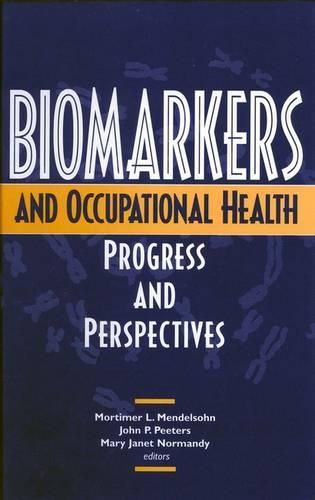Biomarkers and Occupational Health: Progress and Perspectives
National Academy of Sciences

Biomarkers and Occupational Health: Progress and Perspectives
National Academy of Sciences
Biomarkers have emerged as an exciting tool in disease prevention, particularly in the workplace. They may be used to document workers’ exposure to toxins, signal the onset of health effects, or identify individuals with susceptibility to certain environmental threats. But the uncertainty is as great as the potential. Are biomarkers suitable for widespread use? How can they be deployed in diverse contexts? How can biological information about workers be handled fairly and ethically? Biomarkers and Occupational Health describes the state of biomarker development, including the implications of the Human Genome program, and presents a range of viewpoints on the future of biomarkers from the leaders in the field.This book explores the three basic types of biomarkers (markers of exposure, markers of health effects, and markers of susceptibility to disease) from a variety of perspectives. It examines what can be learned from well-known exposure sites - Hiroshima and Nagasaki, Chernobyl, and the Hanford nuclear site in the United States, for example - and a wide range of human cases and animal studies. The book also explores the costs and ramifications of developing a large-scale program to monitor potentially exposed workers (e.g., at a cleanup site). A framework is offered for the use of biomarkers based on the mandate to change the environment before you change the worker. The book explores how to identify ethical issues, how to set development priorities, and how to integrate biomarkers into an occupational health and safety program. The authors present the latest technical findings about markers for chronic beryllium disease as well as markers for exposure to carcinogens, radiation, and chronium - including prospects for detecting long-past exposures. Biomarkers and Occupational Health offers an update on biomarker development and explores a wide scope of issues. This book will be important to occupational health professionals, biomedical researchers, toxicologists, epidemiologists, and labor and management officials involved in worker health issues.Moritmer L. Mendelsohn, M.D., Ph.D., is Vice-Chairman of the Radiation Effects Research Foundation (RERF) in Japan, which studies the long-term health effects of the atomic blasts in Hiroshima and Nagasaki, and he is former Associate Director of the Lawrence Livermore National Laboratory in California. John P. Peeters, Ph.D., is a geneticist who is currently directing a division of the Office of Occupational Medicine for the United States Department of Energy. Mary Janet Normandy, Ph.D., is a toxicologist who specializes in the metabolism of xenobiotics in mammalian systems. She is currently a member of the Department of Energy’s Office of Occupational Medicine.
This item is not currently in-stock. It can be ordered online and is expected to ship in approx 4 weeks
Our stock data is updated periodically, and availability may change throughout the day for in-demand items. Please call the relevant shop for the most current stock information. Prices are subject to change without notice.
Sign in or become a Readings Member to add this title to a wishlist.


